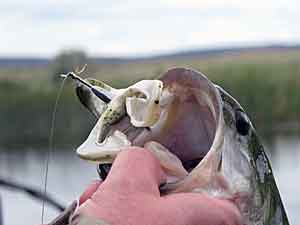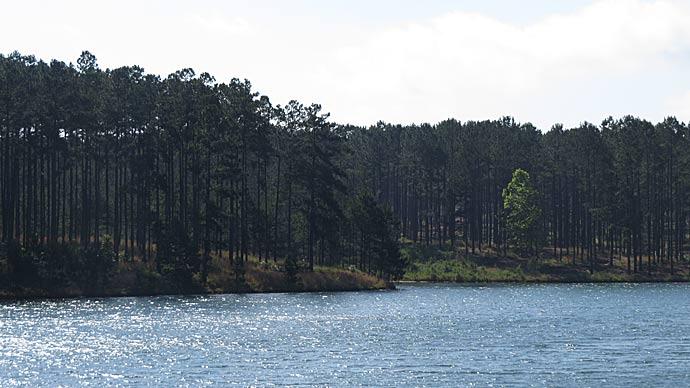
Not only is the term structure often misinterpreted, but so is it's relationship to fish location.
Simply stated, structure is a change in the contour or content of the bottom of a lake. It is NOT weeds, stumps, docks, or whatever fish use as cover.
Any change in depth is an indication of structure. The structural features are points, ledges, gravel or sand bars, old road beds, creek beds, humps, and ditches. They either indicate a drop or rise in depth. They can be as subtle as a slow tapering point or as obvious as a bluff.
So what does structure have to do with locating fish? An understanding of how most freshwater fish move about is essential. Bass, in particular, do not randomly move about. When you accept this fact, you realize they must relate to structure in their movements. The fish use it similarly to how we use roads, as a path to get where they're going.
The often misunderstood thing is that bass do not always follow it as we would stay on a road when traveling. Schooling and suspending bass can move or hold a hundred feet or more from well-defined structure, but they still relate to it.
Okay, you understand all of this but are still confused about how that understanding relates to finding the fish.
Bass use cover for two reasons, as an ambush point to feed from and as a place of security. Combine that with our understanding of structure, and it becomes obvious that most forms of isolated cover located on or near structure have the potential to hold fish. There are some variables. The fish could be moving and thereby using the structure as a guide, or it could stop along its way to its next intended location. Aside from seasonal movements, foraging or moving to a feeding area are the main reasons bass move.
So we look for cover on or near structure when locating fish? What if there is no need for the fish to move any distance to feed? A percentage of bass will remain shallow throughout the summer and do not need to move out to deep water to feed, and some fish spend most of the summer without the need to move shallow to do so.
Structure still plays an essential role in their location. Shallow fish will hold in cover close to deeper water (structure indicator). Deep fish will hold in areas close to where forage will pass. Most forage will also use structure in their movements. These areas become win-win areas, or what is commonly referred to as the spot on a spot. The deep fish do not need secure cover as the depth provides security.
Fish holding shallow in weeds, brush, along a line of docks, or submerged timber still relate to structural features. They use them to locate prime areas in which to hide. Isolated cover in shallow water will rarely hold fish during the summer.
Keep the structure factor for finding fish uppermost in your mind when searching for shallow or deep fish-holding cover. Mark my words; you will find them. Now all you need to do is figure out how to catch them!




